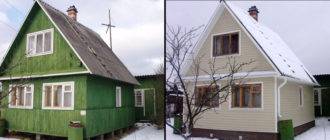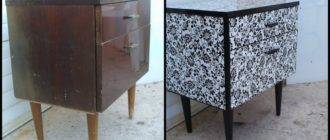Why is painting stairs with your own hands so popular among owners of apartments, houses, summer cottages? The answer must be sought in the area of the cost of the work, and it should be noted that the prices of painters are really high.
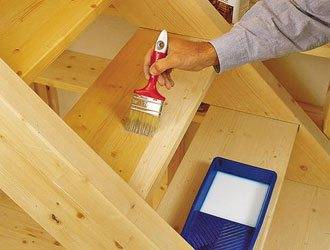
Painting stairs
On the other hand, this is only at first glance, the painting process seems simple and unpretentious, but in order to achieve a result that will correspond to the external idea of beauty, and in the future is on the staircase for a long time, it is necessary to thoroughly observe the painting technology.
What is the reason for the requirement for coloring
A staircase made of wood is exposed, like metal structures, for example, to constant external influences, which quickly make the product unusable.
These include:
- Mechanical damage from walking on steps... This is the moment of wear and tear on the surface of the wood.
- Mechanical damage to handrails and railings... These components also wear out from constant contact.
- Exposure to moisture... And this applies not only to the external location of the structure, in the premises the wood is able to absorb moisture from the air. And moisture destroys the tree.
- Temperature fluctuation... The coloring of wooden stairs always reduces the adverse effect on the wood during temperature changes.
- Exposure to sunlight... Here, the direct hit of rays on the surface of the stairs on the street, or the refracted light in the room, also negatively affects.
In other words, the need for color is to extend the life of the structure, as well as to protect it, which will also affect the external performance of the stairs.
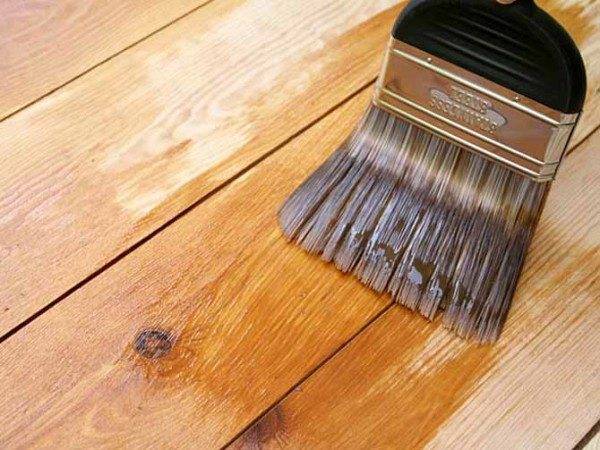
The choice of material for painting
When choosing a coating for a staircase, you should take into account the type of wood, its color, and the conditions for the location of the structure (see also the article Painting a wooden staircase: from the choice of composition to finishing).
You can give several interesting calculations for wood species, and focus on them:
- Conifers can continue to emit resin, and this reduces the adhesion moment of the paint and varnish material and the wood.
- Hardwoods do not emit resins, and you can safely apply almost any paint or varnish.
- Loose wood always absorbs more material than ordinary wood.
- The old structure will require several layers. This application instruction is due to the fact that over the years wood does not absorb paint and varnish material poorly.
Paints
Choosing from the whole variety of paints, first of all, you need to pay attention to the color. This is due to the fact that the color should not be very different from the wood. In addition, it should be noted that the wood under the paint loses its attractiveness.
If the staircase is located indoors, where it is practically not influenced by external factors, you can use oil paint, which is diluted with linseed oil, or use cellulose coatings.
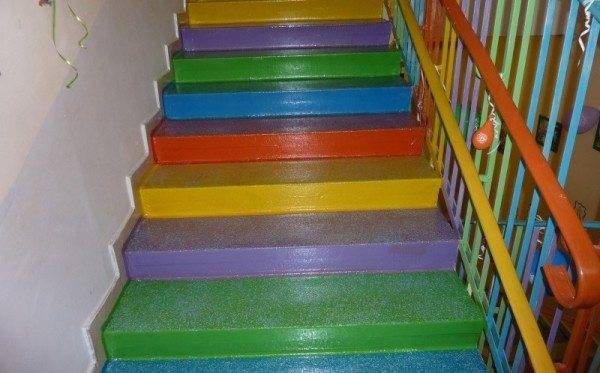
If the staircase is located outside, then here it is necessary to use only paints and varnishes based on natural drying oil. It can be an alkyd paint that is easy to apply with a brush and can also be washed frequently.
Lucky
Colorless varnishes are considered by many as the main material for covering wood, with them painting stairs allows you to leave the entire structure of the wood visible. And the natural, natural structure of wood is always the trump card of wood, especially in interior design.
In addition, varnishes dry quickly enough and are easy to work with.In terms of classification, the varnish can be divided into: alcohol-based material and nitrocellulose varnishes.
In the first version, it is a resin in an organic solvent, and such a varnish can be used strictly indoors. This is due to the fact that the film that forms the coating is not strong enough and does not withstand frost and rain.
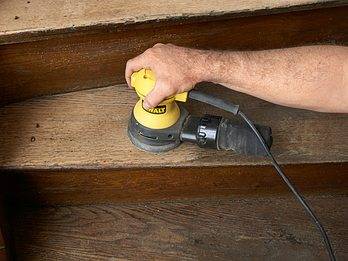
For exterior work, nitrocellulose varnish is perfect, which contains components that make the coating more durable.
Polishes
This material is more suitable not so much as a paint for wooden stairs, but as an addition to an already painted surface. The varnish is applied with a brush to the previously cleaned paint.
This application makes the surface of the structure sparkling and iridescent colors in the sun.
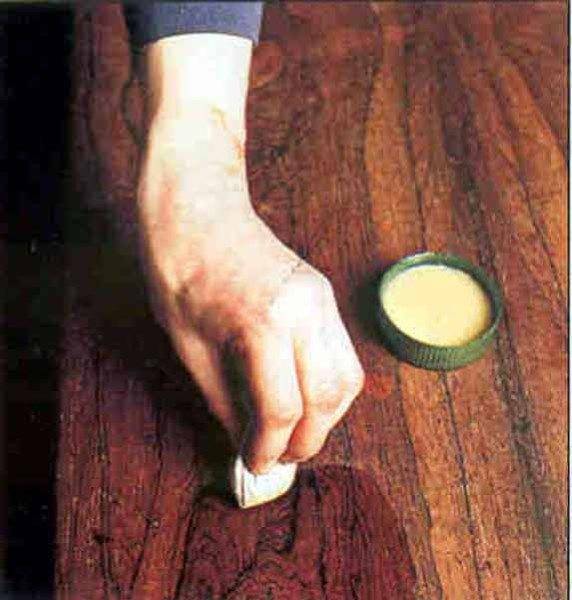
Important! This option is not required for use, but it significantly improves the external parameters of the design.
Enamels and impregnations
Enamel is necessary to give the stairs protection against aggressive environments. Moreover, the material performs two tasks at once, and paints the structure in the desired color and forms a protective film on the surface of the tree.
Enamel is obtained after mixing the pigment and colorless varnish. The method of application is aerosol, while the enamel is thoroughly mixed before work to give it an ideal, uniform base and consistency.
You can even say that this is a fairly common staircase coloring, and most importantly, it is done very quickly.
The enamel can be presented in matte and glossy versions, both types being able to dry on the surface of the stairs within 60 minutes after application.
Important! Choosing this option of paint and varnish material, you need to make sure of its environmental friendliness, because it will be used indoors.
But regarding impregnations, here you can consider quite interesting properties of the material.
The impregnation most known to any man in the street is a type of stain, which is capable not only of imparting a certain color saturation to the tree, but also has the properties of an antiseptic and fire-repellent material.
Naturally, paint for a wooden staircase should at least have similar qualities, however, stain is not the final version of wood processing. On top, in any case, it will be necessary to apply varnish.
Important! In the absence of experience in applying impregnation, it is worth trying first with an oil or wax base. These types of material allow for multiple coats of impregnation and leveling of stains. When working with alcohol stain, it should be borne in mind that it instantly freezes on the surface of the wood.
Painting process
The first step must be a prepared surface. To do this, you need to pay attention to the steps and railings. They must be sanded, and in places of obvious defects, if any, putty with a special putty on wood.
Important! There are a few rules to follow. Firstly, the putty should match the color of the wood, and secondly, grinding is carried out in two stages, at first rough, and after a few days finishing.
In addition, painting the steps of a staircase will require a preliminary application of a primer, and it is recommended that the application be carried out in several layers.

Painting
Certain tools may be required for painting. For example, if we are talking about stain, then a spray gun is perfect, which will allow you to apply layers evenly. But if there is no sprayer, you can safely use a brush (see also the article Restoration of a wooden staircase: the nuances of work in detail).
Bristle brushes are recommended for thick and lingering paint, while a soft hair brush is ideal for soft and liquid paint.
In order for the paint for the stairs to lay down perfectly on the surface, it is necessary to hold the brush at an angle of 45 degrees to the surface to be coated.
Of the basic rules for staining, the following can be noted:
- Painting always requires several coats.
- The next layer is applied after the previous one has completely dried.
- The material is evenly distributed over the surface of the wood, this avoids streaks.
- The first layer is applied along the grain of the wood, and the second across, that is, the principle of perpendicular layering works.
- The paint must be stirred periodically so that the substance is constantly in the same state.
Naturally, the steps are covered with a large number of layers, since they remain the parts of the ladder most susceptible to wear and tear. For handrails and posts, you need a number of layers that will be completely homogeneous.
If the staircase is to be painted in two colors, then the second color is applied after the first one has completely dried. At the same time, the border is determined with scotch tape, which allows you to make a perfectly even "meeting" of different paint colors.
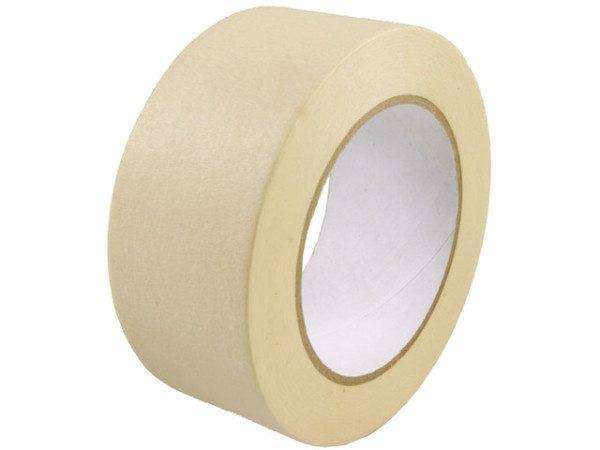
And a folding ladder - we save useful space "href =" https://flwn.imadeself.com/33/widy/105-raskladnaya-lestnica "> A folding ladder - we save useful space).
And how to do this, in the video presented in this article, you will find additional information on this topic.

